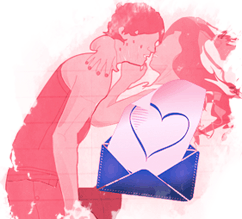The Real Meaning Behind 10 Unusual Emojis

If a picture is worth a thousand words, it’s no wonder the emoji keyboard is everyone’s second language. The cute pictographs cover basically every situation known to man, and make texting a lot more efficient (and colorful!).
Since emoji originated in Japan, dozens of the smileys represent important cultural traditions. Some we use all the time – sushi, anyone? – but plenty others might leave you scratching your head. With a little decoding, however, you’ll be making use of these odd icons in no time.
From Good Housekeeping.
1 Woman With Bunny Ears

What You Thought It Was: You and your BFF
What It Actually Means: The technical definition is “Woman With Bunny Ears” — Apple’s version just happens to be a duo — but it’s actually a subtle nod to the Playboy Bunny. In Japan, a “Bunny Girl” is also know as Kemonomimi, a human-animal hybrid.
2 Imperial Dolls

What You Thought It Was: Kneeling women
What It Actually Means: Hinamatsuri, or Dolls Day, is a Japanese holiday that began as a way to get rid of bad spirits. People used to set the dolls afloat, sending their troubles out to sea. Today, the figurines are usually too pretty to part with and make for popular collectors’ items.
3 White Flower

What You Thought It Was: ???
What It Actually Means: Its literal definition is a cherry blossom, but the symbol is essentially the equivalent of an A+. Japanese teachers use the stamp instead of smiley-face stickers to mark a job well done.
4 Izakaya Lantern

What You Thought It Was: Party lights
What It Actually Means: Bars and bistros hang red izakaya lanterns to entice pedestrians to grab a quick bite. Think of it as a classier alternative to the golden arches.
5 Love Hotel

What You Thought It Was: “Get well soon!”
What It Actually Means: You might blush, but people will hire a room in a “love hotel” for a couple hours instead of the night. Maybe you shouldn’t send that one to your friend in the hospital…
6 Moon Viewing Ceremony

What You Thought It Was: A stack of ping-pong balls?
What It Actually Means: Tsukimi is a festival held every fall to celebrate the full moon. The square icon includes pampas grass and dango (a sweet dessert food with its own emoji:
7 Japanese Ogre

What You Thought It Was: You without makeup
What It Actually Means: According to folklore, Namahage is a hideous creature usually depicted with gnarly teeth, horns, and lots of hair. Traditionally, men will dress as namahage on New Year’s Eve to scare away evil spirits.
8 Pine Decoration

What You Thought It Was: Artfully-arranged bamboo
What It Actually Means: This New Year’s decoration, called kadomatsu, is made of bamboo or pine. It’s placed outside of the home to welcome good spirits and bring a large harvest.
9 Post Office

What You Thought It Was: A french horn
What It Actually Means: Think of it as an old-time siren — mailmen used post horns in the 18th and 19th centuries to get clear a path for the mail coach. Today, post horns are found outside of many European post offices.
10 Man in Business Suit Levitating








